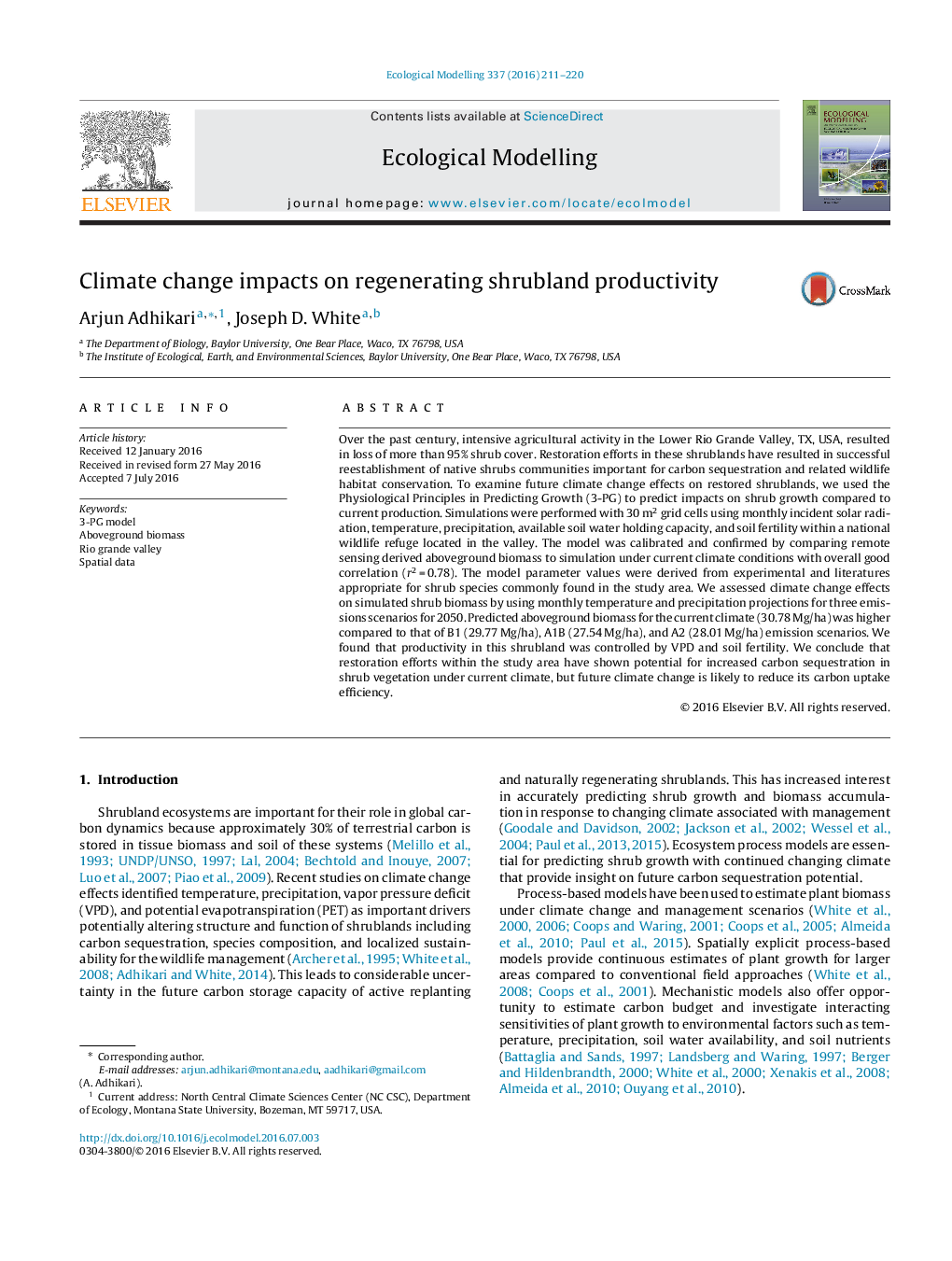| Article ID | Journal | Published Year | Pages | File Type |
|---|---|---|---|---|
| 6296082 | Ecological Modelling | 2016 | 10 Pages |
Abstract
Over the past century, intensive agricultural activity in the Lower Rio Grande Valley, TX, USA, resulted in loss of more than 95% shrub cover. Restoration efforts in these shrublands have resulted in successful reestablishment of native shrubs communities important for carbon sequestration and related wildlife habitat conservation. To examine future climate change effects on restored shrublands, we used the Physiological Principles in Predicting Growth (3-PG) to predict impacts on shrub growth compared to current production. Simulations were performed with 30Â m2 grid cells using monthly incident solar radiation, temperature, precipitation, available soil water holding capacity, and soil fertility within a national wildlife refuge located in the valley. The model was calibrated and confirmed by comparing remote sensing derived aboveground biomass to simulation under current climate conditions with overall good correlation (r2Â =Â 0.78). The model parameter values were derived from experimental and literatures appropriate for shrub species commonly found in the study area. We assessed climate change effects on simulated shrub biomass by using monthly temperature and precipitation projections for three emissions scenarios for 2050. Predicted aboveground biomass for the current climate (30.78Â Mg/ha) was higher compared to that of B1 (29.77Â Mg/ha), A1B (27.54Â Mg/ha), and A2 (28.01Â Mg/ha) emission scenarios. We found that productivity in this shrubland was controlled by VPD and soil fertility. We conclude that restoration efforts within the study area have shown potential for increased carbon sequestration in shrub vegetation under current climate, but future climate change is likely to reduce its carbon uptake efficiency.
Related Topics
Life Sciences
Agricultural and Biological Sciences
Ecology, Evolution, Behavior and Systematics
Authors
Arjun Adhikari, Joseph D. White,
